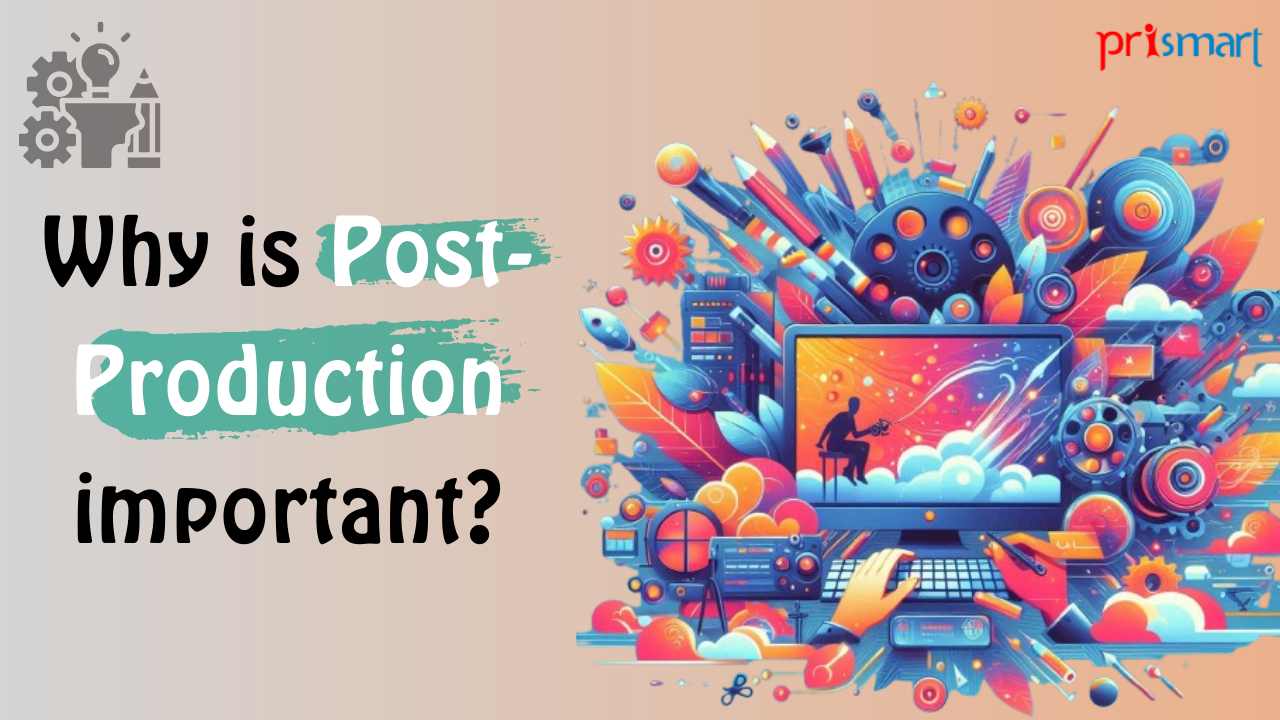Post-production is the last stage in the video creation process. It is the step where the different components of the video are polished and given a final touch. This includes footage assembling, music editing, mixing, voiceovers, sound editing, special effects, quality checks, and distribution. In this blog post, we’ll explore everything you need to know about video post-production, its importance, key elements, and the post-production process.
The Final Stage: Post-Production
Creating a video includes three necessary steps:
Pre-production: So this is the planning stage where everything is planned out, whether the script, the budget, objectives, style, or actors.
Production: The production stage is also the making of the video stage, wherein the video footage is shot and sounds are recorded.
Post-Production: This is the final stage where the footage and sound are edited to bring them in sync, visual effects are added, colour correction is done, and the final video is released.
Click to check our Pre-production portfolio : https://prismartstudio.com/service/best-corporate-video-production-company/
Why is Post-Production important?

- Video Enhancement: During post-production, post-production artists do final video editing, sound editing, and colour grading to create a polished video.
- Error Correction: The post-production stage also helps identify and fix any mistakes that may have been overlooked during production.
- Improve audio-visuals: Post-production enhances the overall viewing experience by improving the audio and visual elements.
The Process of Video Post-Production
Post-production is the most important stage in making any short film, explainer video, full-feature film, commercial, or music video. Let’s talk about the post-production process.
1. Initial Editing & Colour Grading
In this step, editors review all scenes, select the final frames, create rough cuts, and arrange them into a comprehensive story. After this, the editors add background music and sound effects, remove noise, adjust colours, and visual effects.
- Fixing Errors
The next step involves identifying any errors or issues in the animation footage. These could be incorrect timings, out-of-sync movement, or incorrect camera angles. This is usually a time-consuming step and may involve animation retakes.
- Sound Design
Sound designers work closely with the director and editor to create and select sound effects and music that convey the desired emotions. In this step, the dialogues recorded by voice actors, music, and sound effects are added to the video.
- Mixing
This step involves blending and balancing sound effects, music, and voices to ensure clarity and overall balance. The sound designer adjusts the music levels to ensure it doesn’t overpower the dialogue that is recorded to deliver the message.
5. Final Edit
Based on the feedback and reviews, the editor may re-edit the video for the final output. This could involve adjusting the colours, and audio levels and eliminating other mistakes to ensure the project is ready to deliver.
6. Output
The output is an uncompressed version of the video for further distribution on different platforms, such as OTT or social media. It includes all transitions, colour grading, visual and sound effects, music, graphics, animations, titles, and credits.
Contact us today for video post-production: https://prismartstudio.com/
Tools of Video Post-Production
To boost online visibility and viewer response to their video, artists use cutting-edge software to edit them. These could be:
- OpenShot
- Blender
- DaVinci Resolve
- Shotcut
- XSplit Express
- Nuke
- Adobe Photoshop
Key Elements of Video Post-Production

- Storage: Make sure there’s sufficient storage space and file safety using options like hard drives or RAID systems.
- Video editing: Use a shot sheet to select the best takes and assemble materials in the required sequence.
- Background music and soundtracks: Create original soundtracks, obtain permission for an existing song, or use copyright-free music.
- Sound editing and mixing: Remove background noise, cut dialogue tracks, add voiceovers, SFX, and Foley sound effects, and adjust volume levels.
- Visual effects: Add animations, objects, characters, and replace green screens with desired backgrounds.
- Colour correction: Adjust white balance, contrast, and style videos visually to give them a natural and realistic look.
- Titles, credits, and graphics: Use end cards with names, logo, and give credits to create a strong online presence. Encourage CTA at the end of the video.
- Distribution: Prepare the video for various platforms, from OTT streaming to social media feeds, and apply the best strategies for video promotion.
Who’s Involved in Video Post-Production?
Post-production requires a team of skilled professionals, including:
- Video editors
- Colourists
- Sound editors
- Music editors
- Sound directors
- Graphic designers
- Visual effects artists
- Motion designers
Conclusion
Video post-production is a process that brings vision to life. Using the right tools and editing software, you can easily create our video masterpiece and show it to your target audience. All you have to be is creative, passionate, and willing to take criticism positively to give the best results.
Prismart Productions is one of the leading post-production service providers in Delhi, India. With our commitment to quality, quick turnarounds, and affordable budgets, we’ve gained recognition as the most genuine animation studio.
Contact us to get a quote today.




